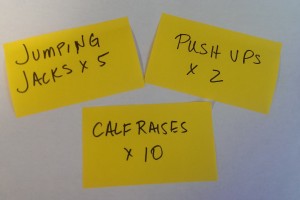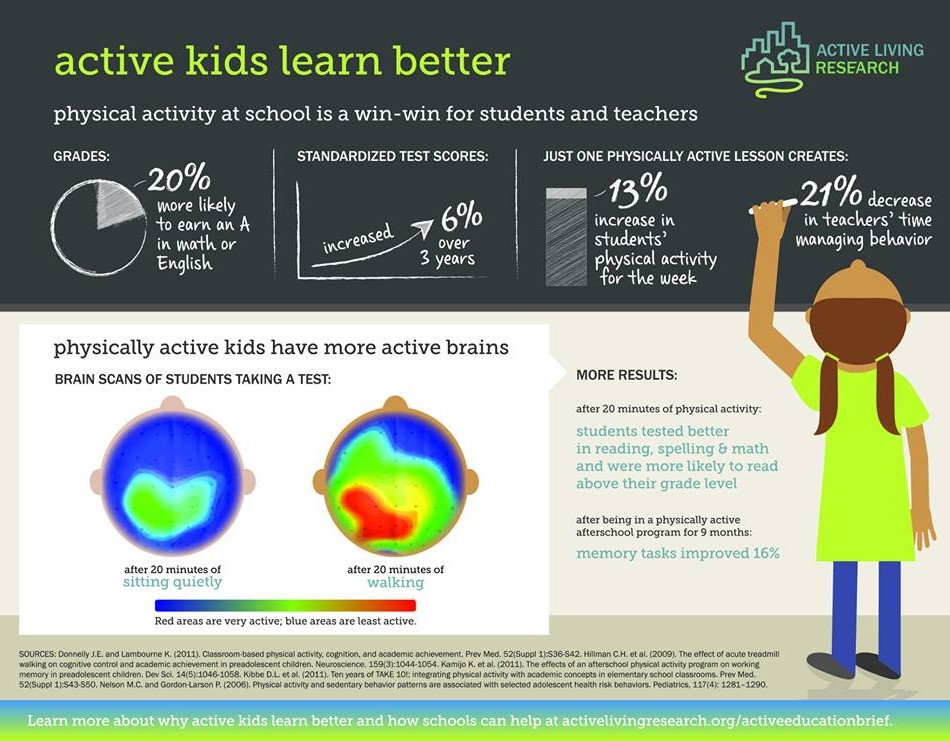
For the Classroom: Physical Activity Dice
Nicolas Charron, ACSM EP-C – Physical Activity Health Educator
As educators, we know that active kids learn better. In fact, according to Active Living Research, after 20 minutes of physical activity, students test better in reading, spelling and math and are more likely to read above their grade level.
So how do you incorporate physical activity into the lesson when it’s too cold to go outside? Try Physical Activity Dice. Health Educators at the Poe Center like to use this game when it’s too cold to go outside and when there may be a limited amount of space to play.
Physical Activity Dice
Here is how you play.
Supplies:
![IMAG0578[1]](https://www.poehealth.org/wp-content/uploads/2016/01/IMAG05781-150x150.jpg) One or more six-sided dice. Normal board-game dice work well, but big foam dice are a lot of fun for the kids to roll. The more dice you use, the more activity students will get.
One or more six-sided dice. Normal board-game dice work well, but big foam dice are a lot of fun for the kids to roll. The more dice you use, the more activity students will get.- Activity Strips – Think of as many different exercises/silly movements as you can and write them down on thin strips of paper – one exercise per strip. Fold the strips in half and place them in a hat, bowl or bucket. Add a little math to the activity by writing a multiplier next to each exercise on the slips of paper. When a participant rolls the dice, he or she will have to multiply the die number with the number on the activity strip.For example: A student rolls a two and selects an activity strip with calf raises x 10. Now the whole class has to do 20 calf raises, instead of two, making the exercise more rigorous. For harder exercises, such as push ups, multiply the exercise only by two; so the class only has to do 12 repetitions.
- Ask for two volunteers to come to the front of the class. The first student picks an activity strip from the bucket or bowl. Ask the student to demonstrate the exercise.
- The second volunteer rolls the dice and announces the math problem “5 Jumping Jacks x 5.” Allow the class to call out the answer, “25 Jumping Jacks!” If you’re using multiple dice, add the numbers from each die, then multiply the sum by the number on the activity strip.
- Have the two volunteers lead the class in the exercise. Have them perform the activity at a slow pace; so the rest of the group can follow along. Have the class count together as they do each exercise. If anyone needs to stop for any reason or does not want to participate, have them sit down at his/her desk.
- Repeat as many times as you wish. 10-15 minutes is recommended.


